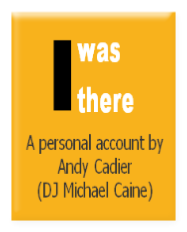© 2014-


Radio Essex - History
During 1964 Roy Bates an Essex fisherman and businessman decided to investigate the possibility of starting his ow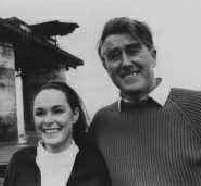 n radio station after witnessing the early success of Radio Caroline and the initiative of Screaming 'Lord' Sutch in making use of the abandoned Thames Estuary wartime forts to launch Radio Sutch.
n radio station after witnessing the early success of Radio Caroline and the initiative of Screaming 'Lord' Sutch in making use of the abandoned Thames Estuary wartime forts to launch Radio Sutch.
Bates, who knew the waters of the Estuary well, spent some months in late 1964 and early 1965 visiting the various forts, of which there were then six. The former Army forts at Red Sands and Shivering Sands were both already being used by offshore radio operators, but he selected an ex-
Having identified the Fort he wanted to use for his station, to be known as Radio Essex, Roy Bates set about raising finance, acquiring equipment and finding broadcasting and engineering staff. These arrangements took a few months to complete and during the summer of 1965 when Bates was finally ready to start installing the broadcasting equipment he returned to Knock John with colleagues Mark West and Richard Palmer to discover that Reg Calvert of Radio City -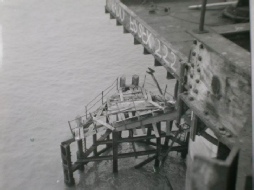 tlet -
tlet -
The Radio Essex men asserted their 'right' to use Knock John and the violent struggle which ensued between the two rival groups resulted in the Radio City staff being forcibly evicted from the Fort. After this Reg Calvert abandoned plans to launch a second station based at Knock John.
Having disposed of the rival personnel Bates and his group set about restoring two of the wartime generators to provide power for the Fort and also constructed rudimentary studios in one of the old storerooms.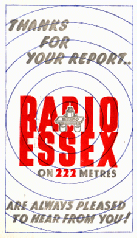
Test transmissions from Radio Essex started on 27th October 1965 and regular programmes, consisting of middle of the road music during the day and Top 40 at night, began officially on 7th November 1965.
Radio Essex transmitted on a very low power and its primary coverage area was the county of Essex. It claimed to be mainland Britain's first local radio station, announcing itself as "The Voice of Essex" and to this end concentrated on securing advertising mainly from local companies and businesses.
Initially the hours of transmission were from 7.00am to 9.00pm, but Radio Essex later became Britain's first 24 hour a day radio station, with night-
The Bill to outlaw offsh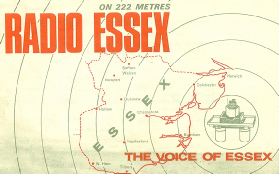 ore broadcasting stations -
ore broadcasting stations -
Radio Essex however, did not have to wait for the introduction of legislation proposed in the Marine etc. Broadcasting (Offences) Bill before action was taken against it.
On 29th September 1966 Roy Bates was served with a summons to be heard at Rochford Magistrates Court alleging the illegal use of a transmitter at Knock John Fort, contravening the Wireless Telegraphy Act of 1949. 
Mr. Bates then announced that he had taken over another fort at Tongue Sands, 9 miles off Margate, and would use this as a broadcasting base for a new station -
When the case was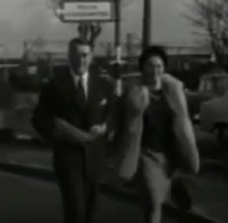 heard Roy Bates (who represented himself in Court) argued that his station was outside the jurisdiction of the Court because it was located more than 3 nautical miles from the Essex coast. However, John Newey, appearing for the prosecution used the same arguments he had successfully presented the previous week against Radio 390 -
heard Roy Bates (who represented himself in Court) argued that his station was outside the jurisdiction of the Court because it was located more than 3 nautical miles from the Essex coast. However, John Newey, appearing for the prosecution used the same arguments he had successfully presented the previous week against Radio 390 -
The magistrates found that the Knock John Fort was within British territorial waters and imposed a fine of £100, but refused a Post Office request for confiscation of the transmission equipment and payment of costs.
Roy Bates immediately lodged an appeal against his conviction, but his station -

Roy and Joan Bates
Radio Essex Advertising Rate Card

Click on picture to enlarge

The Times
1st December 1966
Radio Essex station ID

Statement by station owner, Roy Bates about the case for commercial radio

Radio Essex name and wavelength painted on Knock John Fort.
Photo: Andy Cadier

History
Key Dates
Fort and Location
Technical
Staff
Programmes





Roy and Joan Bates on their way to court in Rochford




Back to Britain Gallery


Back to Radio Essex

